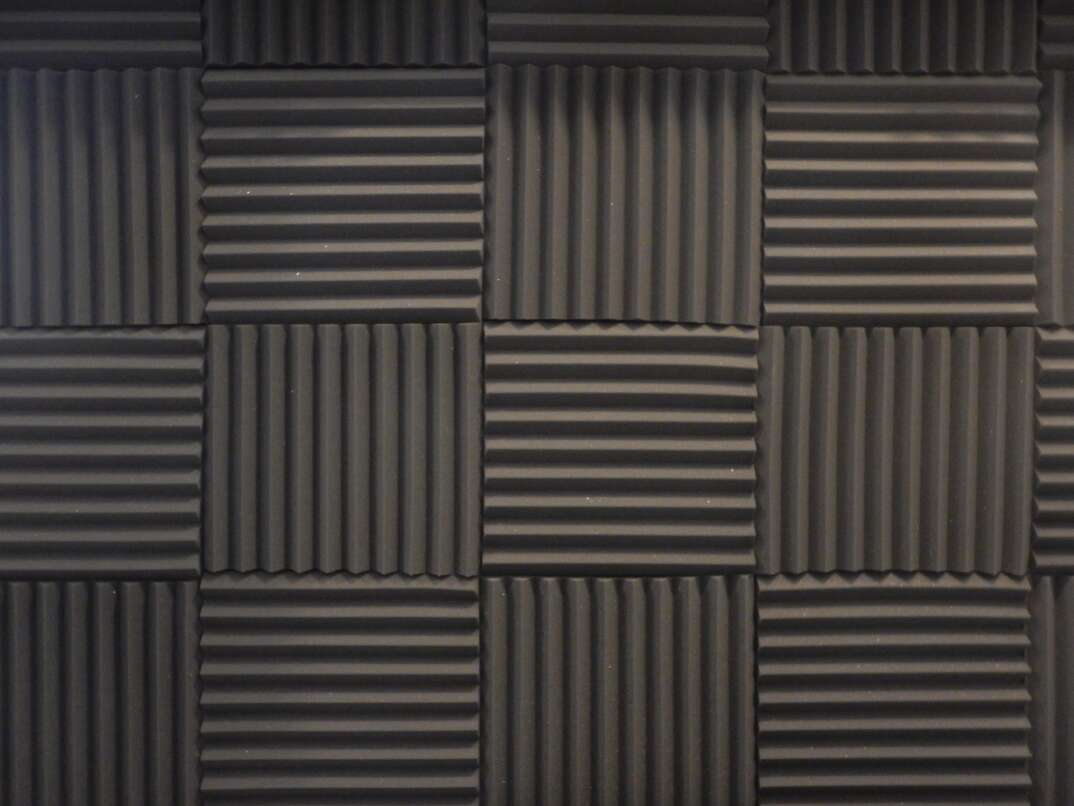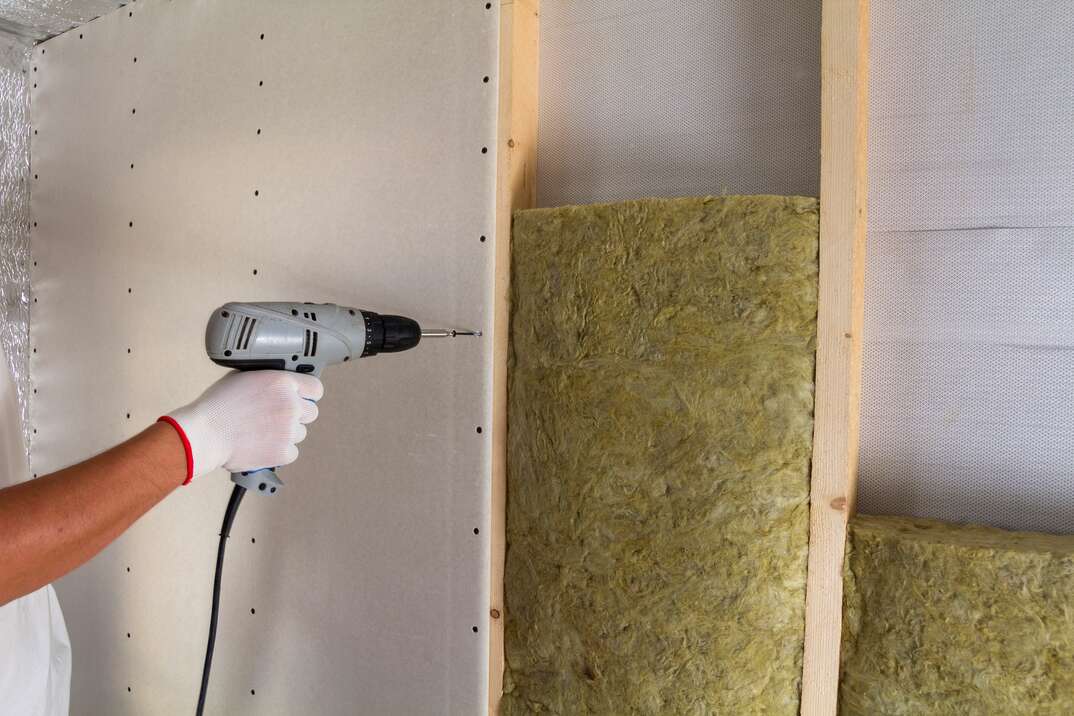Silence Is Golden: Here's How to Soundproof a Room

Soundproofing a Room at a Glance
- Find source of the sound
- Add thicker carpet
- Seal doors and windows
- Plug leaks
- Add foam panels
- Add acoustic panels
Do you ever wish you lived in a soundless vacuum? Maybe you work nights and value your sleep during the day, so you want to keep out the sound of your neighbor’s dog barking. Or, while you value your child’s musical talent, you’d really rather keep the noise of their drumming practice contained in one room.
This May Also Interest You: How Much Cash Will You Drop on a Drop Ceiling?
Whether you’re looking to keep sound in or out, soundproofing a room can help dull excess noise, which can leave you less stressed and better rested.
How to Soundproof a Room
A soundproof room is created by adding insulating materials that block, diffuse or reflect sound. These materials can be added to your walls, doors, windows and ceiling. There are lots of ways to soundproof a room, and the method you choose to limit noise in your house will depend on a lot of variables. Consider your budget, whether it’s a new build or an existing structure, what’s causing the noise and whether you want to keep sound out or in.
The Science of Soundproofing
Any attempt to soundproof a room aims to limit sound vibrations. Some materials create a barrier to block sound. Others absorb sound, which helps stop echo. Sound absorption materials like egg-crate foam are great for recording studios, but they won’t create complete silence.
In most homes, sound absorption is an acceptable option. Cutting sound by just 10 to 20 decibels can lower noise enough to let you or your housemates sleep. It's not always necessary to block noise completely.
What Materials Can Block Sound?
Any material that adds an extra layer between walls, doors or windows can help dampen sound. If you’re building a new home, you can add foam or other insulation behind the drywall. Good insulation in your attic also helps with sound absorption.
Fabric and wood are also good insulators. Anything with mass, such as a sofa or bookcase, can help limit noise coming from a neighboring room. Specialized soundproofing material includes soundboard, latex wall liners, acoustic panels and acoustic blankets, all of which are designed to stop vibration and dampen sound.
 -------------------------------------------
-------------------------------------------
Simple Techniques for a Soundproof Room
- Find the source of the sound. Make sure you know where the noise is coming from. It may be echoing floors, thin walls or windows that face toward a busy road. If you know where the problem is, you can have a focused solution.
- Add thicker carpet. Thicker carpet acts as a fabric insulator that can block the noise coming from underneath. It’s also great at keeping the noise in if you're soundproofing a music or theater room.
- Seal the doors and windows. Noise often comes through cracks in doors and windows. Use a rubberized doorstop at the bottom of the door and add heavy drapes across your windows. You can also buy soundproofing curtains that have an extra dampening effect.
- Plug leaks. Add an extra barrier at the point where the sound is coming in. If the neighbor you share a wall with is playing video games late at night, try putting a full-length bookcase against the adjoining wall to help block sounds.
- Add foam panels. Use foam panels or other soundproofing materials on the walls or ceilings to block sound. These come in many stylish designs so they won’t detract from your decor. You can even buy soundproof wallpaper made of thick foam that dampens vibrations from neighboring spaces.
- Add acoustic panels. Acoustic panels are a good solution if you’re trying to keep sound in. They absorb sound and reduce echo and are often used in restaurants to dampen background noise. They don’t need to cover the entire space, so they can be a more affordable option than foam panels.
How Do You Soundproof a Room Cheaply?
Soundproofing solutions don’t need to be expensive. Moving around your existing furniture can have an impact, and some of the techniques mentioned above — like using a doorstop — are very affordable. If you need extra sound dampeners, thick blankets over doors and windows are a good, inexpensive solution, and cheap blankets can often be found at thrift shops.
If you do choose to buy specialized soundproofing materials, search for bargains. You should also look for solutions that fit over your existing walls. Removing and reinstalling drywall to fit insulation behind it will always be a more expensive option.
More Related Articles:
- Will a DIY Drop Ceiling Get You in Over Your Head? Here’s What You Need to Know
- How Much Does Attic Insulation Cost?
- How Much Do Blown-in and Spray Foam Insulation Cost?
- How Much Does Drywall Cost?
- How to Hang Drywall: A 7-Step Overview
How Do You Soundproof a Room That Is Already Built?
It is possible to pull off your drywall, add installation and reinstall new drywall. However, this is a big job that you probably want to avoid. It’s much easier to use materials that attach to the outside of the walls rather than inserting material between the walls.
Specialized soundproofing materials that can be used in existing buildings include soundboard, latex wall liners, acoustic panels and acoustic blankets. You can also add an extra layer of drywall to your walls, with or without extra installation underneath.
If your sound problem is coming from above, it’s possible to add a drop ceiling that hides an extra layer of insulation.
How Do Professionals Soundproof a Room?
Professionals use these methods to create a soundproof room:
- Increase the weight of the wall. Adding mass to the wall creates an extra layer to block noise. Professionals use specialized materials such as soundproof sheetrock or mass-loaded vinyl.
- Dampen the vibration energy of the wall. Sound travels through vibration, so stopping vibration can help stop sound. Vibration dampening compounds can be sandwiched between sheetrock layers to stop sound transmission. You can buy these for DIY projects, and most are applied with a caulking gun.
- Decouple the wall assembly. If your sheets of drywall don't touch, they transmit less vibration and noise. Professionals use resilient sound isolation clips that keep one side of a wall separate from the other. This means each side vibrates separately, cutting down on sound transmission.


